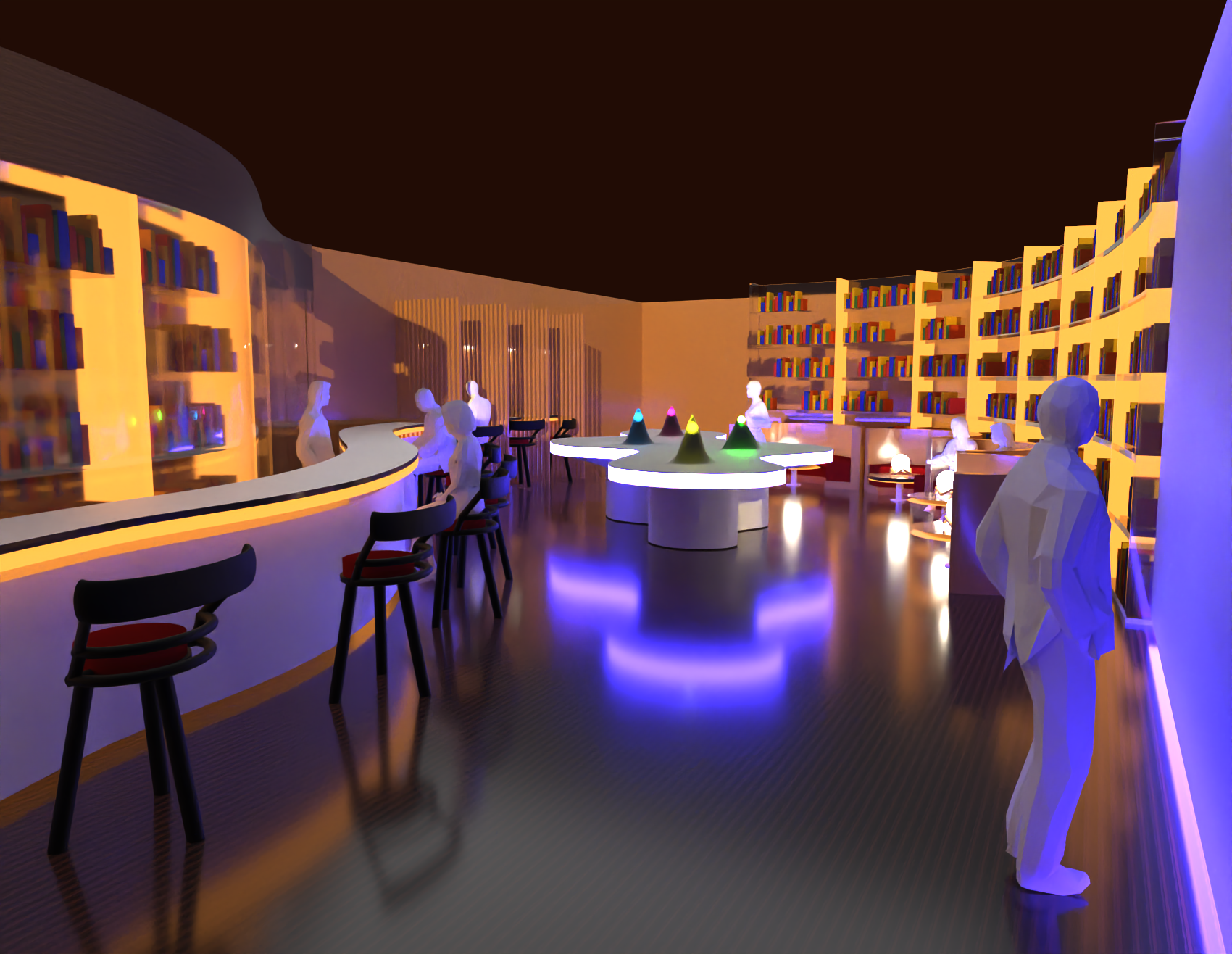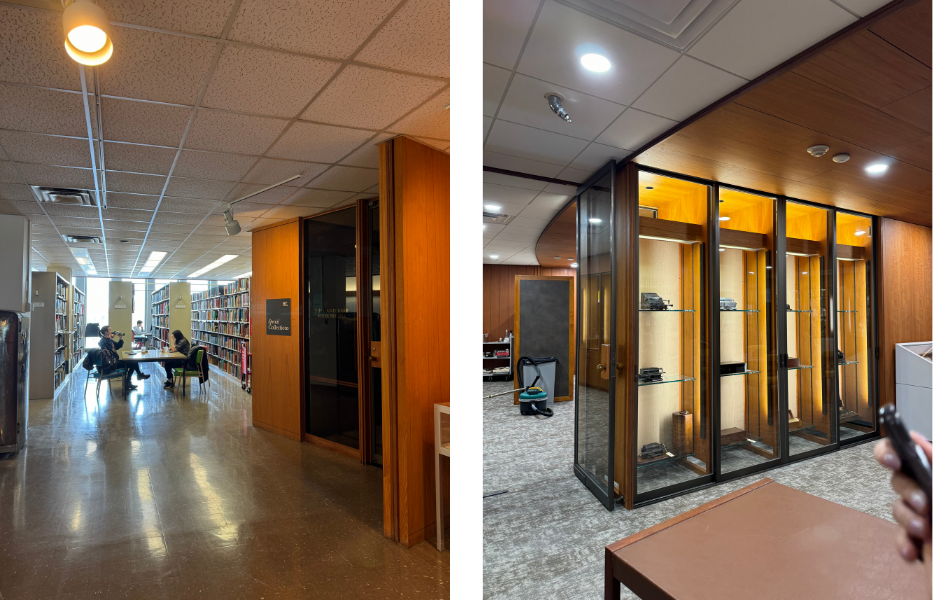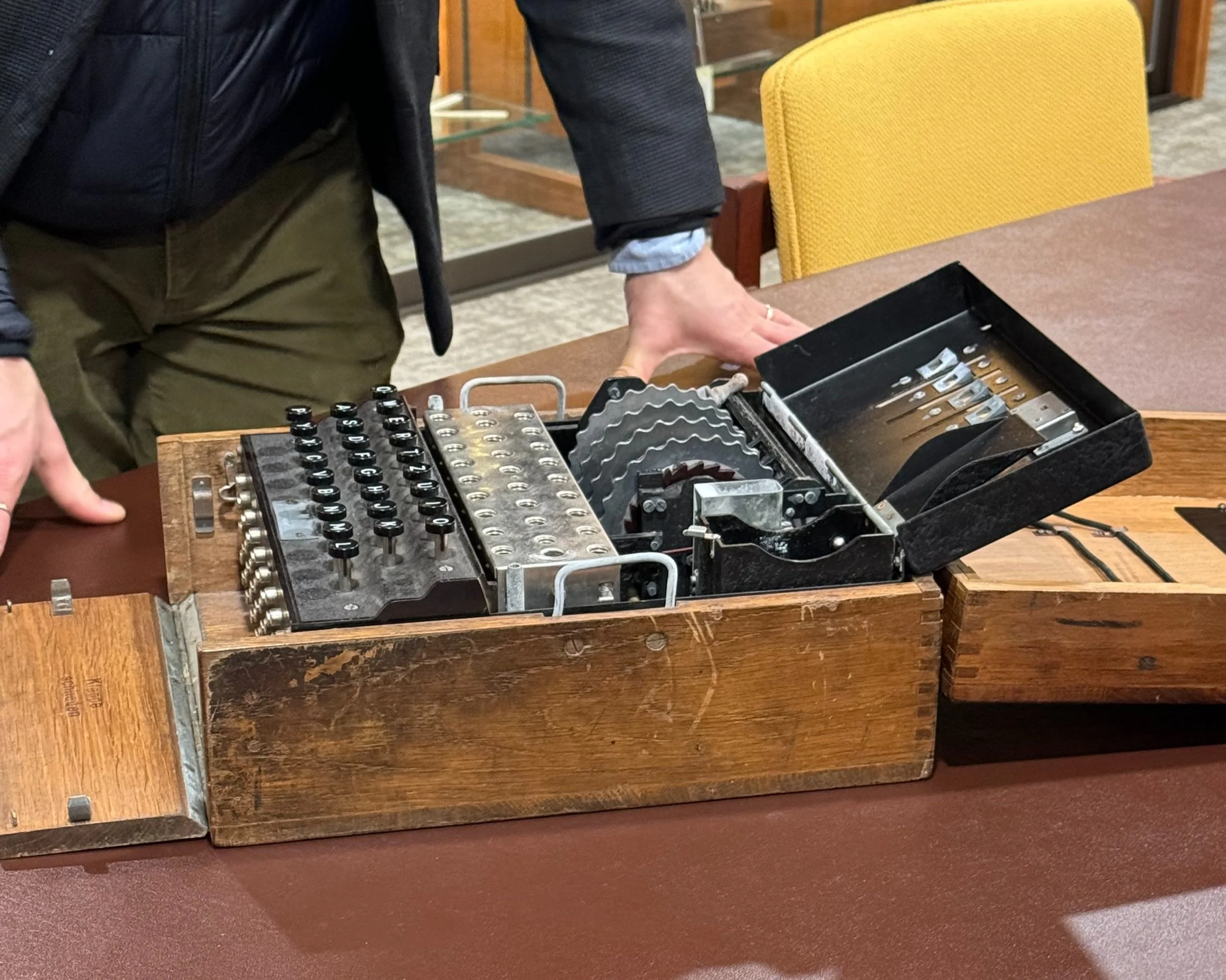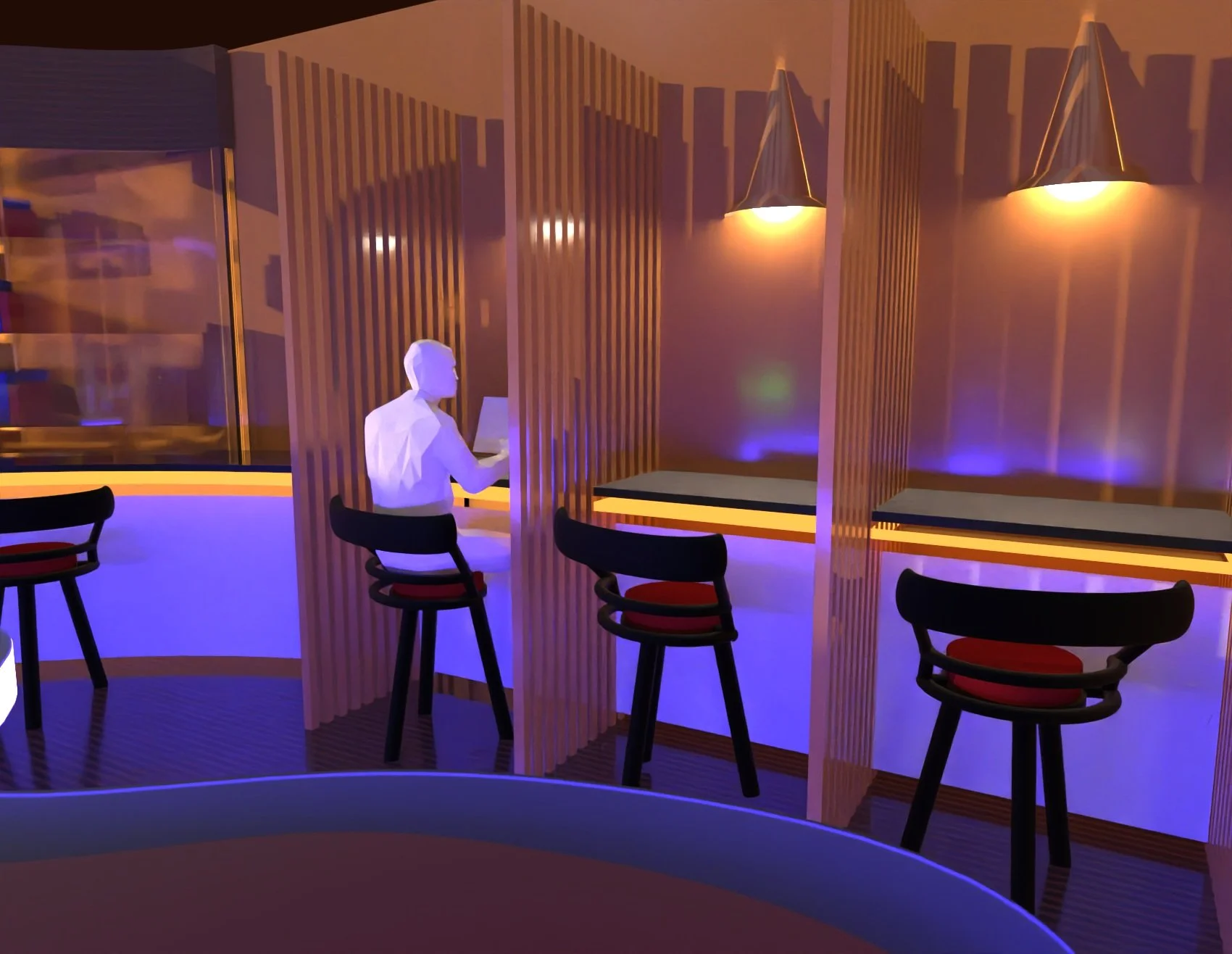Special Collections
Visual Design, Interaction Design, Spatial Design, Physical Prototyping, 3D Modeling
The Clubhouse Library reimagines traditional research spaces by blending rare collections with interactive, adaptive experiences, transforming learning into an immersive and dynamic journey.
TOOLS: Adobe CC, Rhino, Unity, Laser Cutting, 3D Printing
TIMELINE: 2 weeks, Spring 2024
TEAM: Silvia Shin
Redesign Carnegie Mellon University’s Special Collections experience to enhance campus presence while maintaining focus on preserving the history of computing.
OBJECTIVE
PROBLEM SPACE
CMU’s Special Collections is hidden from view and lacks interactive engagement.
CMU’s Special Collections is currently tucked away in an obscure location, limiting its visibility and engagement with the broader campus community. Its hidden placement makes discovery difficult, reducing spontaneous visits and deterring students who might otherwise explore its resources.
The collection houses invaluable materials on the history of computing, however, the way these artifacts are presented can feel static and unapproachable. Without interactive and dynamic ways to engage, students and researchers may struggle to connect with the content in meaningful ways.
CONCEPT
Fostering discovery, research, and engagement through a dynamic clubhouse atmosphere.
The Special Collections Clubhouse reimagines CMU’s Special Collections as an inviting hub for discovery, learning, and engagement. By blending a clubhouse atmosphere with meaningful interactions, the design makes the collection more accessible and immersive, encouraging exploration while supporting storage, research, exhibition, and instruction. Designed to attract new visitors, it creates a space where students and faculty can connect with rare books and artifacts in a dynamic and engaging way. Rooted in exclusivity, preciousness, and community, the Clubhouse transforms Special Collections into a living, evolving experience centered around its visitors.
Research Desks
TOUCHPOINT 1
Researchers can work in a dedicated space that allows them to interact with and study artifacts and books in the collection. Wood partitions were implemented to create a sense of privacy without completely isolating researchers from the rest of the space. The booths are placed in proximity to the book bar and storage area to streamline requests and supervision.
TOUCHPOINT 2
Book Bar
Curator of Special Collections, Samuel Lemsley can easily engage with visitors of Special Collections with easy access to the books and artifacts. Glass cases featuring the items within the collection are on display for visitors to view and request while sitting at the bar. The bar table is structured to facilitate learning and conversation for visitors who may be curious about the history or mission of Special Collections. Connected to the bar is a separate entryway for Samuel to access the other artifacts and books in storage.
TOUCHPOINT 3
Conversation Booths
Arched booths with seating are integrated for users to sit and converse about findings and information learned while sharing their impressions and experiences. The booths face the interactive table, allowing visitors to view all areas of the space and engage with the table personally. The arched form is intentionally structured to create an environment for concentrated conversation while facilitating discussion with other visitors.
INTERACTION 1
Learning Table
Within the central space is a large touchscreen table with an online catalog to browse and select artifacts or books. The request will be received, and the item can be retrieved. The table comprises four learning peaks for the visitor to learn information about different components of the artifact or book. Stamps can also be used on the table. These stamps will be digitized on the spot of the table after the visitor completes the action. They can then move their stamps around and send them to the top of the peak. The peak will blink, indicating that the stamp has been received. The stamp will then regenerate in the spot of origin.
INTERACTION 2
Impressions Map
Stamps created by visitors at the touch table are digitized and sent to a large interactive screen. The stamps act as a record of the visitor’s impact and extend the experience. All stamps created by the visitors are then compiled into a collage-style exhibit map. They are featured in chronological order to indicate the number of visitors.
CONCEPT VIDEO
















